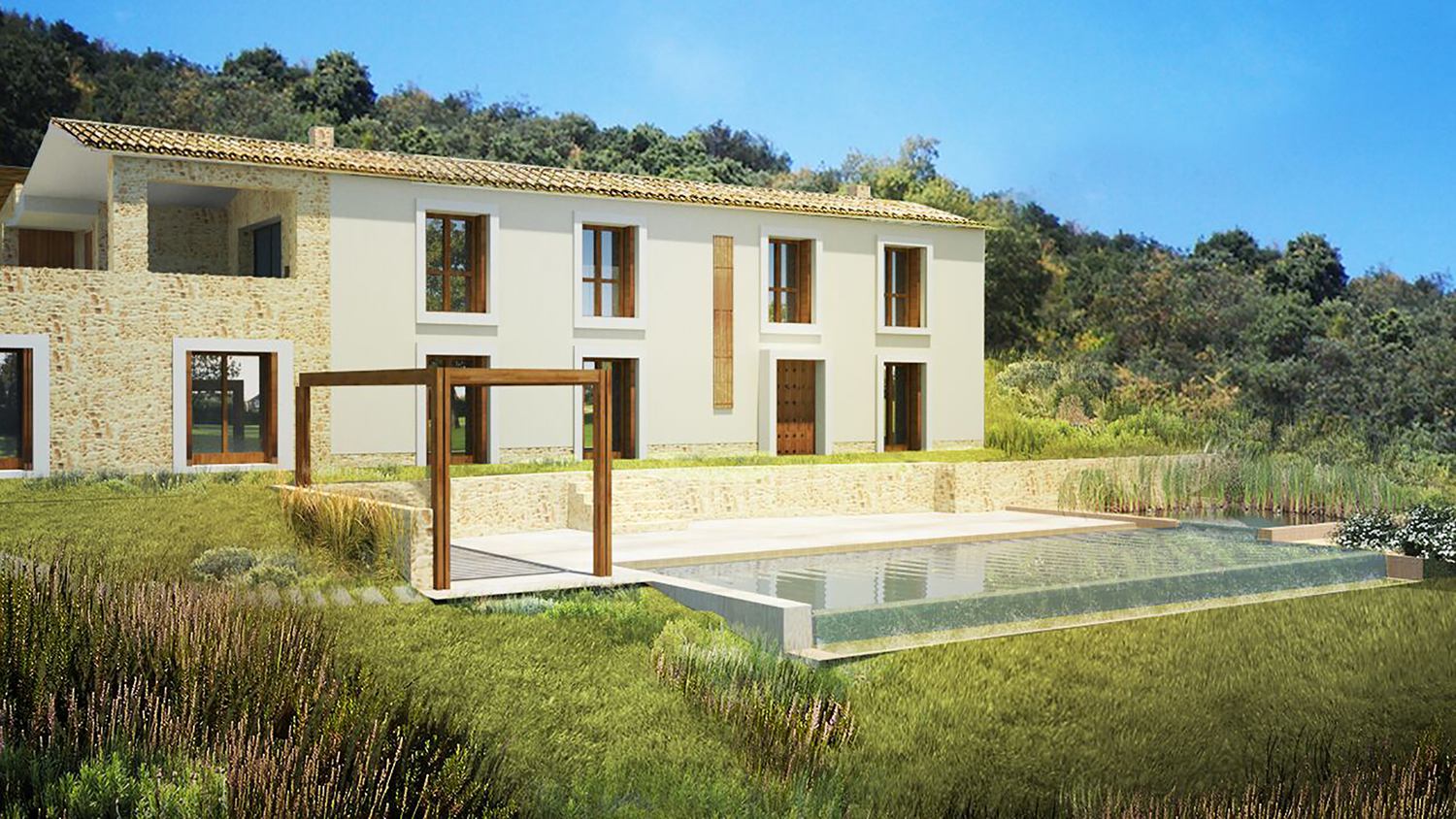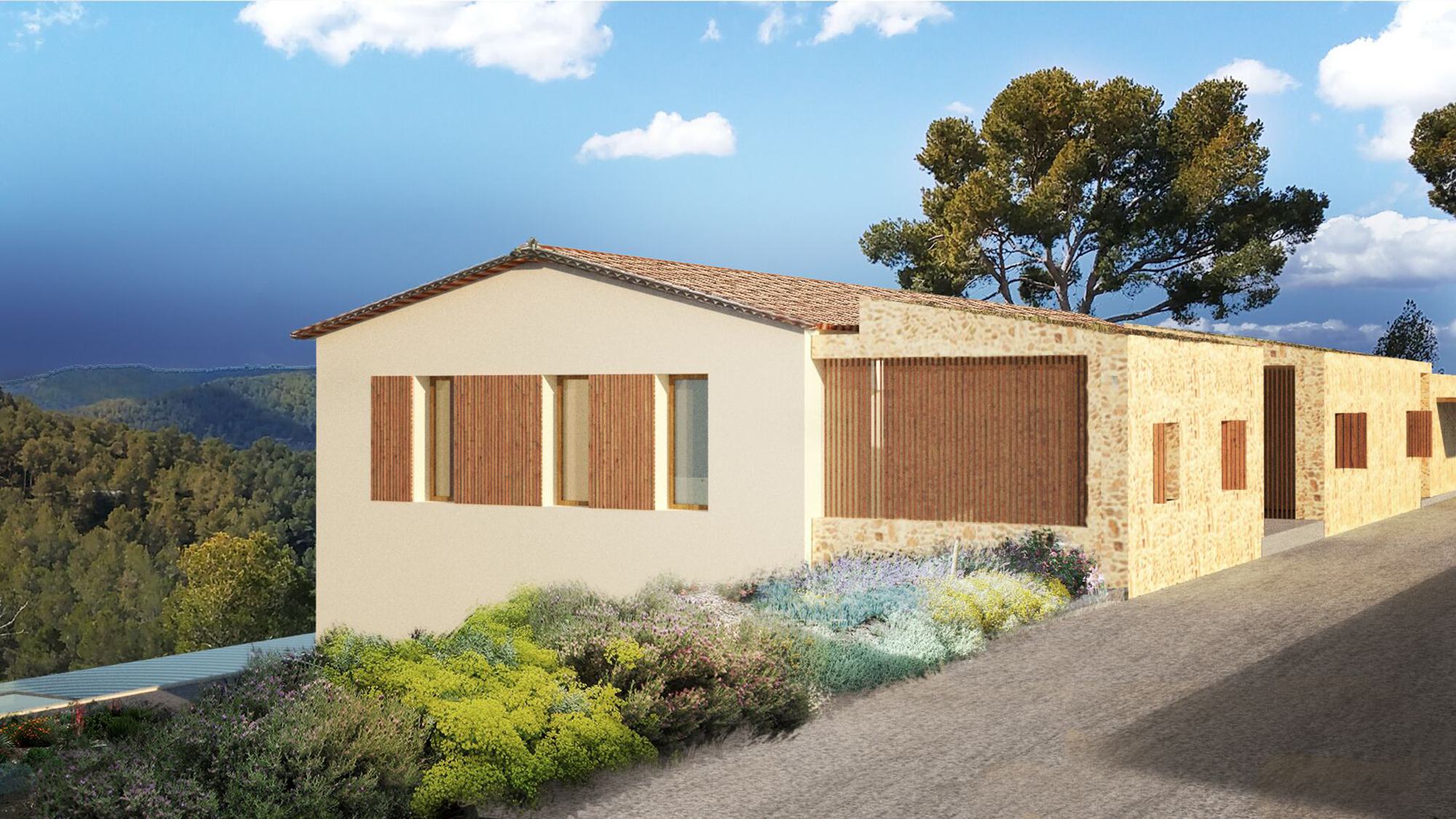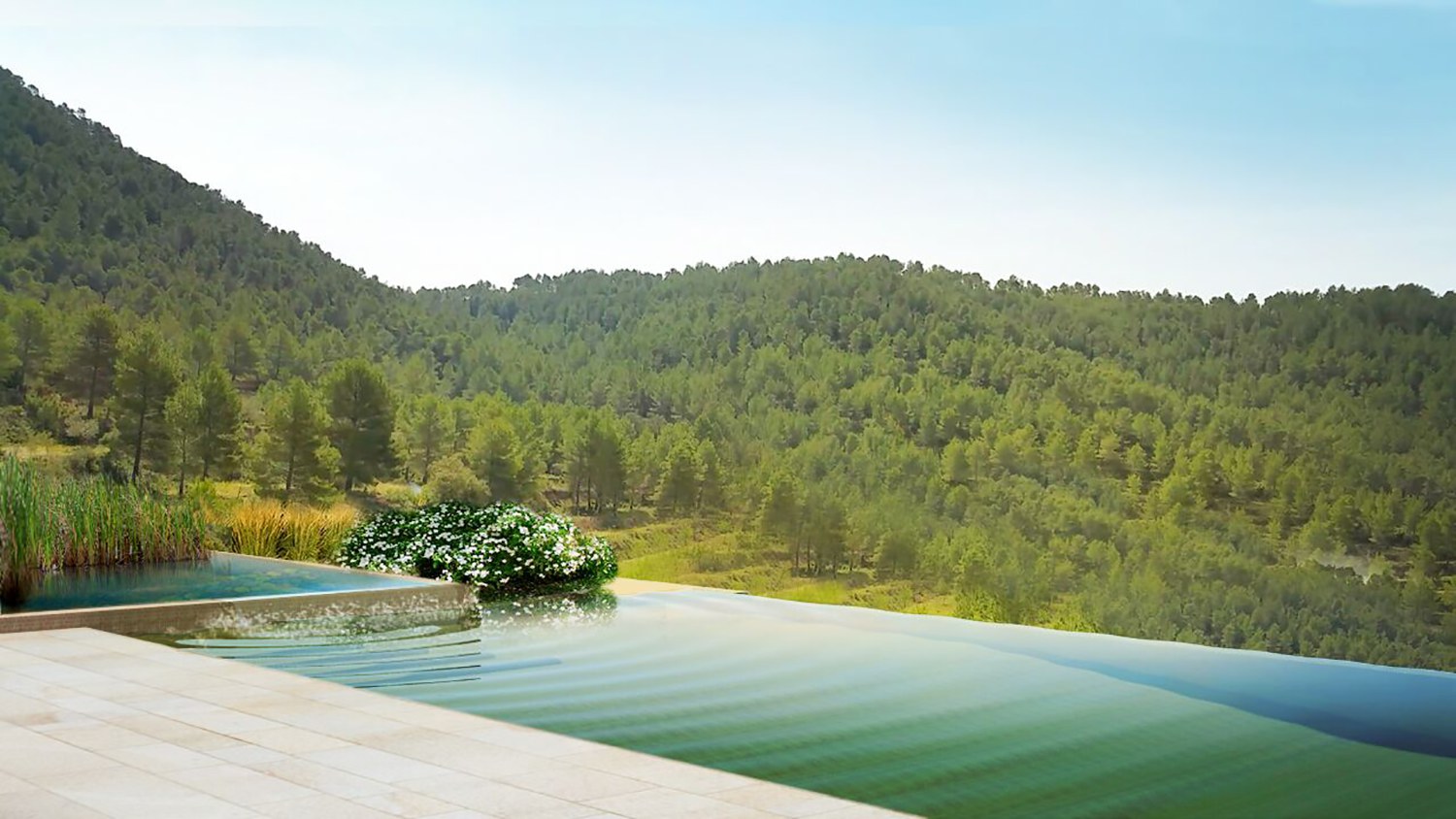The owners of this old farmhouse in the mountains behind Alicante approached us to help them build a sustainable and beautiful house that needs to generate all its own power. Although part of the farmhouse received a new roof some years ago, the overall state of this property was a state of ruin.
The main old farmhouse had only the roof, which actually saved the walls from caving in, but that was it. There was no intermediate floor and actually the old walls were in a bad state in several places, although could be saved. There were several outbuildings and a newish structure meant as a storage space or garage. We are currently building this project. All the outhouses have been torn down and replaced with new structures, which will have a finish of stone.
The old house on the other hand had stone walls which needed severe repair, and serious insulation, because in these mountains night time winter temperature goes below freezing point. The main house will therefore have exterior insulation with render, while the new additions will be in stone. We added a one-storey addition which will be a guest suite, to be used separately at times. The roof of this building is the porch of the main house. All other bedrooms are also downstairs, with direct access to natural pool and garden. The living spaces are upstairs, because at the back of the house, where you approach the house and we placed the main entrance, you are actually at first floor level. This way the living spaces have more view.
The house has a large installation of PV panels to generate energy, and a combined installation of air-to-water heat pump and solar thermal panels to generate hot water and heating, and which can also run the fancoil cooling in summer. All water comes from a well, and is recycled.
Much thought has gone into our design of the windows. These have shutters downstairs, but upstairs we need to bring in the sun in winter for passive heating. So the windows are floor to ceiling, divided in four panes. In winter the shutters are open, in Summer the bottom half of the shutters can shield the bottom two panes from the heat while the top two panes receive shadow from the overhang.



